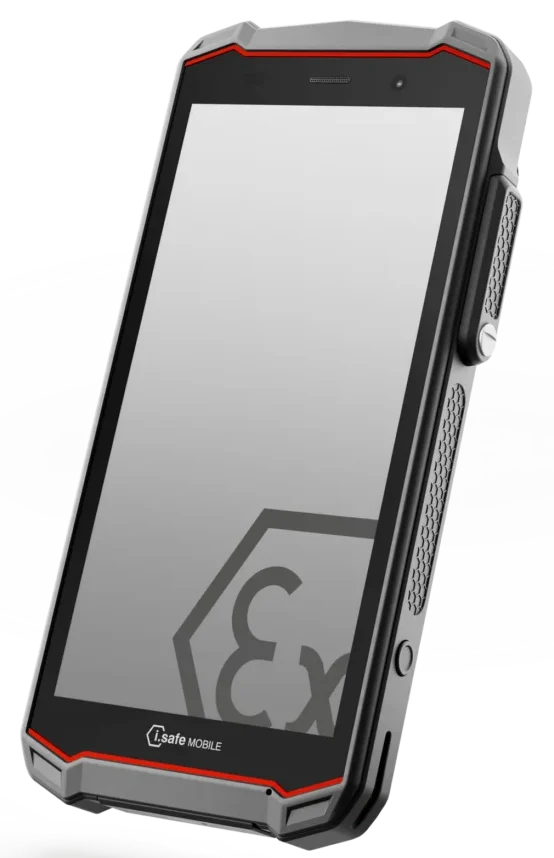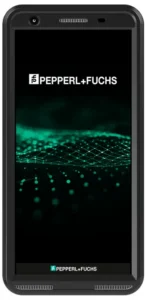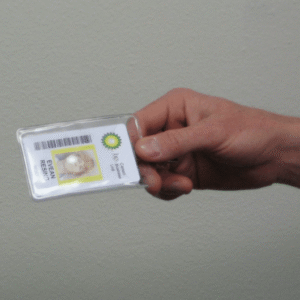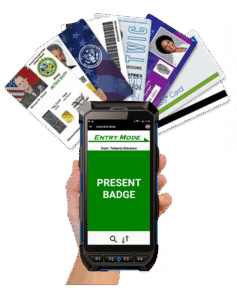
Leveraging intrinsically safe smartphones and Telaeris’ proprietary software, XPressEntry, safety and security professionals working in hazardous environments gain a powerful, handheld identification solution.
Determining If Intrinsically Safe Devices are Required
Back in the depths of the 2008 recession, Telaeris received a much-needed business opportunity with a major refinery for our XPressEntry handheld solution. The opportunity had three major requirements for the handheld device:
- Integrated with their access control system – Check!
- Able to read their custom security badge – Check!
- A Class 1 / Division 1 intrinsically safe (IS) reader – Uh, oh!
As we detailed in our previous blogs, Telaeris has a long history with Intrinsic Safety, and we knew that we didn’t have a solution to meet the last requirement. The opportunity did not materialize at a time when it would have made a real difference.

Fast forward to 2024, when we received yet another request from a client for an intrinsically safe solution. You might think that after so many years of not finding an IS handheld solution, we should give up on our quest. However, we doubled down on our efforts to understand the industry’s offerings and what it would take for Telaeris to build our own intrinsically safe security badge reader.
The Search for Intrinsically Safe Android Devices
We knew that an intrinsically safe Android device with an integrated badge reader like our XPressEntry handheld did not exist on the market. But for quickly identifying employees, we now had several features that would enable this. This meant that for customers requiring IS and wanting a solution tied to their access control system for emergency mustering or identification, a certified Android phone would be enough.
At first review, many companies claimed to have ATEX/IS-compliant hardware. However, as we visited various manufacturers, it became clear that there was a notable difference in their offerings and what our customers were seeking. ATEX Div 2 or Zone 2 certifications were common, indicating that the equipment was designed to operate in areas where hazardous conditions are not likely present and risks are rare. Additionally, some manufacturers who claimed ATEX or IS compliance were clearly dishonest.
Manufacturers that produce intrinsically safe devices must undergo regular audits, with their equipment tested periodically. This, along with keeping detailed documentation of their supply chain and build procedures, ensures a safe product. Committing to these inspections and manufacturing requirements is not for the faint of heart.
Two of the many manufacturers we researched stood above the others. Both had products we felt we could recommend to our end clients to work with our XPressEntry Identification and Emergency Mustering software. These two companies are i.safe MOBILE and Pepperl+Fuchs (P+F), both German companies that provide intrinsically safe Android devices worldwide.
Product Specs: i.safe MOBILE & Pepperl+Fuchs
Telaeris would feel safe putting our software in explosive areas with either of these manufacturers’ hardware. Below are the actual devices that we evaluated and their specifications:
i.safe MOBILE |
Pepperl+Fuchs |
|
 |
 |
|
| Model Number | IS540.1 | Smart-Ex® 03 |
| Operating System | Android 14 | Android 13 |
| Processor | Qualcomm® QCM6490 Octa Core | Qualcomm® Snapdragon QCM6490 and SDR753 platform |
| Memory | 8 GB RAM | 128 GB internal memory | 8 GB RAM | 128 GB internal memory |
| Display | Gorilla® Glass | 1080 x 2160 | Gorilla® Glass | 1080 x 2160 |
| Dimensions | Size: 180.0 x 84.9 x 20.6 mm | weight: 422 g | Size: 84 mm x 172 mm x 18 mm / 25 mm | weight: 400 g |
| Battery | 4400 mAh | replaceable | Li-Ion battery, 4400 mAh |
| Camera | 48 MP AF rear camera | 5 MP front camera | 13 MP AF rear camera | 5 MP front camera |
| SIM Support | Dual SIM (eSIM + nano-SIM) | Dual SIM (eSIM + nano-SIM) |
| Communications | Bluetooth, NFC, and GPS | Bluetooth, NFC, and GPS |
| Ports | USB-C
16-pin ISM interface |
USB-C
3.5 mm audio interface |
| Sensors | Accelerometer, Gyroscope, Light, Magnetic, Proximity, Pressure sensors | Biometric, Accelerometer, Gyrometer, Magnetometer, Barometer, Proximity, Ambient
light |
| Protections | IP68 dust-/waterproof | MIL-STD-810H | usable from -20 °C to +55 °C | IP68 dust-/waterproof | MIL-STD-810H | usable from -20 °C to +60 °C |
| Approvals: ATEX | II 2G Ex ib IIC T4 Gb
II 2D Ex ib IIIC T135°C |
II 2G Ex ia IIC T4 Gb
II 2D Ex ia IIIC T135 °C Db |
| Approvals: IECEx | Ex ib IIC T4 Gb
Ex ib IIIC T135°C Db |
Ex ia IIC T4 Gb
Ex ia IIIC T135 °C Db |
| Approvals: NEC500 | Class I Div. 1 Groups A, B, C, D, T4
Class II Div. 1 Groups E, F, G, T4 Class III Div. 1 T4 |
Class I Div. 1 Groups A, B, C, D, T4
Class II Div. 1 Groups E, F, G T4 Class III Div. 1 |
These are top of the line IS-certified devices. Both companies also offer devices with less stringent certifications, as well as models specifically designed for use in Mining. Their hardware also meets global certifications for a wide variety of countries.
Identification with Intrinsically Safe Handhelds

The simplest way to allow these IS Android devices to connect a badge back to the access control system is by reading a barcode on the badge. Many badges already have a barcode printed, but if not, a barcode label designed to last the life of the badge can be printed for less than 25 cents. Using XPressEntry software and a smartphone’s camera, the barcode can be scanned and connected directly to the user record in your access control system.
Additionally, if security protocols allow one-to-many facial recognition, this can also be a viable option. Scanning a worker’s face using the camera can biometrically link an ID back to the access control system, quickly verifying employees and contractors.
Both recommended devices support barcodes and facial recognition.
What These Devices Don’t Do

As RFID and access control experts, we’ve explored what it would take to develop a truly intrinsically safe RFID-enabled handheld reader. While some flavors of RFID, such as EPC-Gen2 or NFC, can be read by IS devices, these don’t include the RFID technology in most security badges. This means they don’t allow you to leverage the security of the badges themselves.
In areas where IS is not required, our XPID Series device is capable of reading any security badge technology.
We hope this in-depth excursion into Intrinsically Safe readers has been helpful. If you have questions about managing handheld identification in potentially explosive environments or are unsure whether you need an intrinsically safe solution, please reach out to our technical team. We can help you on your journey to make your facility safer and more secure.
